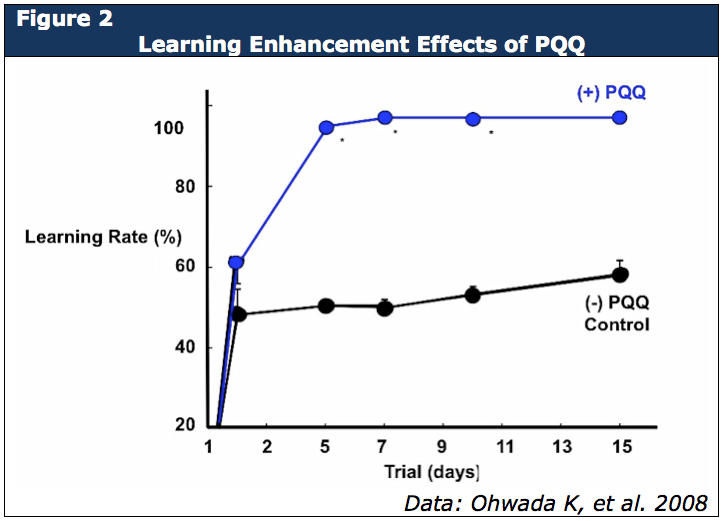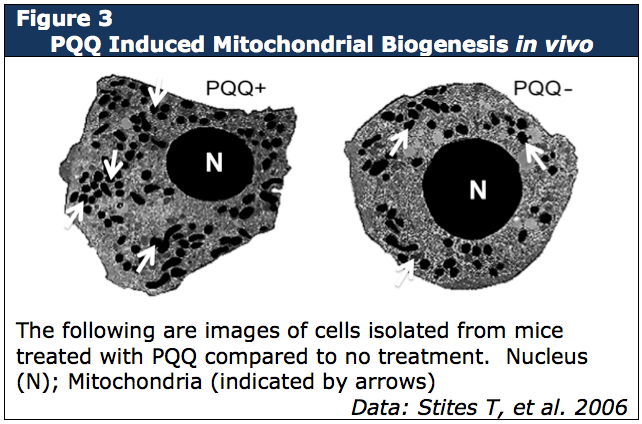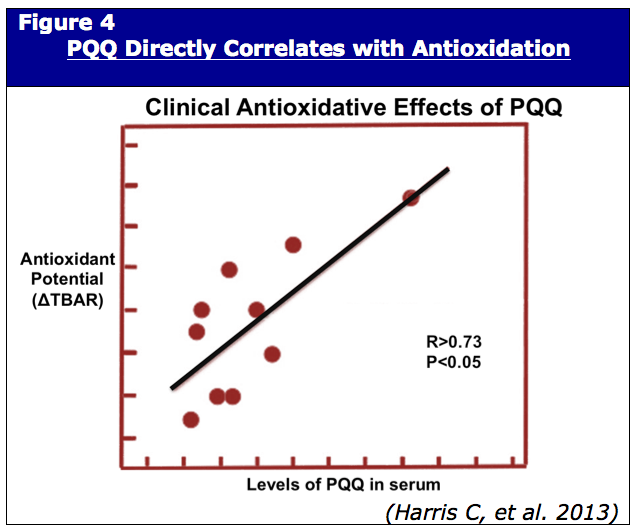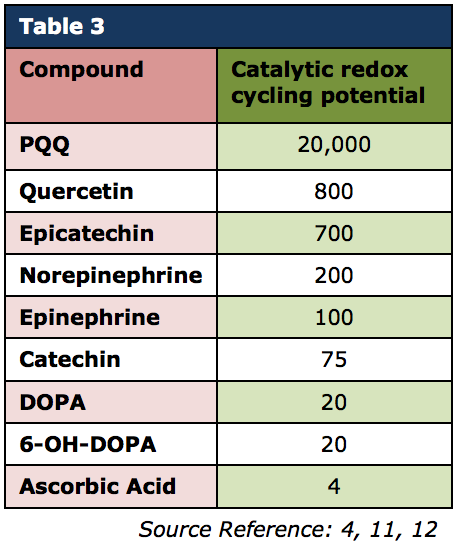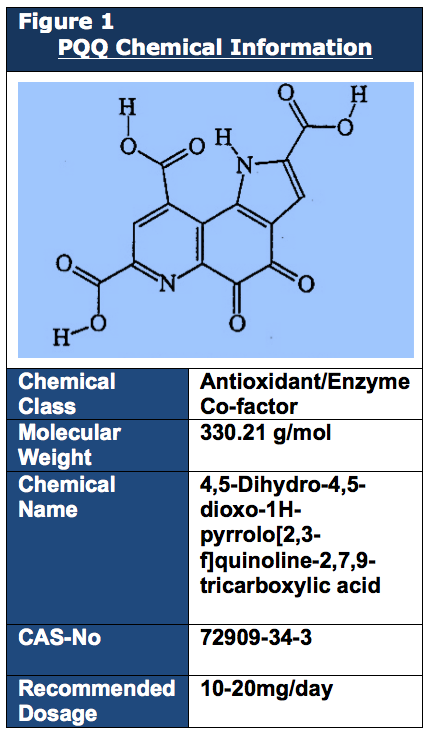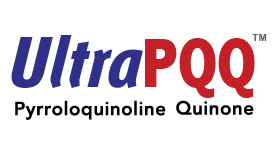Ultra PQQ™
Enhancing Mitochondrial Energy Production
Ultra PQQ features pyrroloquinoline quinone (PQQ), a water-soluble, vitamin-like compound, and Rhodiola rosea, a popular adaptogen. PQQ is an enzyme cofactor possessing antioxidative, neuroprotective, and cardioprotective properties that encourage mitochondrial biogenesis. Rhodiola rosea helps support the adrenal glands. Research shows that Rhodiola rosea is a powerful herb that enhances mitochondrial energy production and helps defend against free radicals in both the nervous system and the mitochondria.
Media Center
Find out where Vesta® Nutra will be.
Access news and the latest posts regarding UltraPQQ™.
Check out the latest research and resources for Ultra PQQ™.


Health Benefits
About PQQ
Originally discovered in 1964, pyrroloquinoline quinone (PQQ) was initially described as just a modest cofactor of glucose dehydrogenase1. Since its humble discovery in bacteria, PQQ has been identified as an essential enzymatic cofactor as well as an important antioxidant in a multitude of different systems and species, including humans2-6. PQQ is a natural substance that has shown to be also found naturally in soil, plants, and in the vegetables we eat (Table1)4,7,8. The ubiquity of PQQ and its presence in many natural settings lends to the idea of its fundamental importance in function of everyday life.
Sometimes referred to as methoxatin, PQQ plays a vital role as an enzyme cofactor. There are numerous, essential enzymes that require PQQ for their function, and as such, these enzymes are appropriately categorized as quinoproteins. For example, IRE1 is an essential protein that aids in the prevention of toxic accumulation of misfolded proteins. IRE1 relies on PQQ for its proper function in order to maintain healthy homeostasis, and there are numerous other human quinoproteins in which the enzyme activity is highly dependent on PQQ9. Another important quinoprotein aids in neurological health. Dopamine beta-hydroxylase (DBH) helps equilibrate our neurochemicals and maintain chemical balance, and DBH requires presence and binding of PQQ to facilitate proper catalysis10.
In addition to its vital role as a enzyme cofactor, PQQ has also been shown to be a highly effective antioxidants, helping our body to get rid of toxic free radicals that contribute to aging and other related conditions4,11,12.
Through a multitude of mechanisms, PQQ helps maintain and support cardiovascular health, rejuvenates brain function, and gives us more energy to help keep us active and healthy.
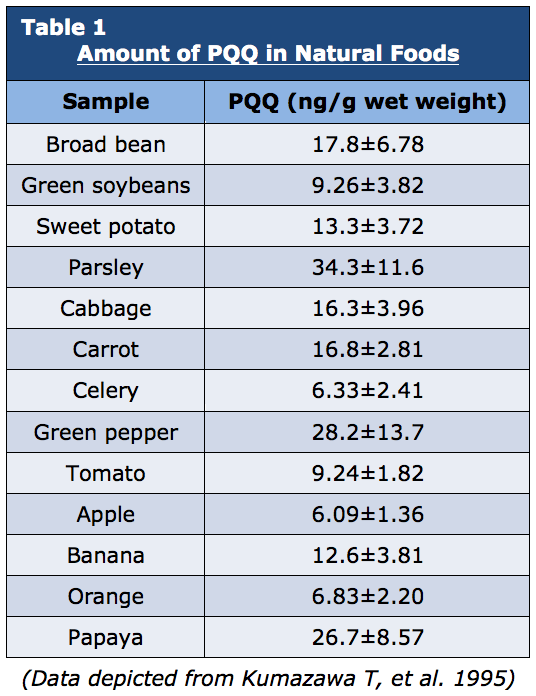
Safety
PQQ is a naturally occurring and crucial to human health. PQQ has been previously proposed by scientists to be an effective dietary supplement because our bodies are not able to naturally synthesize it13. Subsequent studies sought to test safety and toxicities associated with PQQ13,14. The recommended daily intake of PQQ is 10-20 mg/day, and researchers found it to be safe even at relatively high dosages well above the recommended dose13,14. The FDA allows for the consumption and use of PQQ as a dietary product in the United States, and it has also been utilized in clinical trials where no adverse side effects were seen6.
Download UltraPQQ™ Brochure
References
- Hauge JG. Glucose dehydrogenase of Bacterium anitratum: an enzyme with a novel prosthetic group. J Biol Chem 1964;239:3630-3639.
- Anthony C. Pyrroloquinoline quinone (PQQ) and quinoprotein enzymes. Antioxid Redox Signal 2001;3:757-774.
- Goodwin PM, Anthony C. The biochemistry, physiology and genetics of PQQ and PQQ- containing enzymes. Adv Microb Physiol 1998;40:1- 80.
- Stites TE, Mitchell AE, Rucker RB. Physiological importance of quinoenzymes and the O-quinone family of cofactors. J Nutr 2000;130:719-727.
- Sato K, Toriyama M. Effect of pyrroloquinoline quinone (PQQ) on melanogenic protein expression in murine B16 melanoma. J Dermatol Sci 2009;53:140-145.
- Harris CB, Chowanadisai W, Mishchuk DO, Satre MA, Slupsky CM, Rucker R, Dietary pyrroloquinoline quinone (PQQ) alters indicators of inflammation and mitochondrial-related metabolism in human subjects. J Nutr Biochem 2013;24:2076-2084
- Choi O, Kim J, Kim JG, et al. Pyrroloquinoline quinone is a plant growth promotion factor produced by Pseudomonas fluorescens B16. Plant Physiol 2008;146:657-668.
- Kumazawa T, Sato K, Seno H, et al. Levels of pyrroloquinoline quinone in various foods. Biochem J 1995;307:331-333.
- Anthony C,. Pyrroloquinoline Quinone (PQQ) and Quinoprotein Enzymes. Antiox & Redox Signaling 2001; 757-774.
- Friedman S, Kaufman S. 3,4-dihydroxyphenylethylamine beta-hydroxylase. Physical properties, copper content, and role of copper in the catalytic activity. J Biol Chem 1965; 240(12):4763-73.
- Paz MA, Fluckiger R, Gallop PM. Redox-cycling is a property of PQQ but not of ascorbate. FEBS Lett 1990; 264:283-284.
- Fluckiger R, Paz M, Mah J, et al. Characterization of the glycine-dependent redox-cycling activity in animal fluids and tissues using specific inhibitors and activators: evidence for presence of PQQ. Biochem Biophys Res Commun 1993;196:61-68.
- Liang C, Zhang X, Wang W, et al. A subchronic oral toxicity study on pyrroloquinoline quinone (PQQ) disodium salt in rats. Food Chem Toxicol. 2015; 75;146-150
- Nakano M, Takahashi H, Koura S, et al. Acute and subchronic toxicity studies of pyrroloquinoline quinone (PQQ) disodium salt (BioPQQ) in rats. Regul Toxicol Pharmacol. 2007; 70 (1); 107-121
- Zhu BQ, Simonis U, Cecchini G, et al. Comparison of pyrroloquinoline quinone and/or metoprolol on myocardial infarct size and mitochondrial damage in a rat model of ischemia/reperfusion injury. J Cardiovasc Pharmacol Ther 2006;11:119-128.
- Tao R, Karliner JS, Simonis U, et al. Pyrroloquinoline quinone preserves mitochondrial function and prevents oxidative injury in adult rat cardiac myocytes. Biochem Biophys Res Commun 2007;363:257-262.
- Zhu BQ, Zhou HZ, Teerlink JR, Karliner JS. Pyrroloquinoline quinone (PQQ) decreases myocardial infarct size and improves cardiac function in rat models of ischemia and ischemia/reperfusion. Cardiovasc Drugs Ther 2004;18:421-431.
- Zhu BQ, Simonis U, Cecchini G, Zhou HZ, Li L, et al. (2006) Comparison of pyrroloquinoline quinone and/or metoprolol on myocardial infarct size and mitochondrial damage in a rat model of ischemia/reperfusion injury. J Cardiovasc Pharmacol Ther 11: 119–128
- Ohwada K, Takeda H, Yamazaki M, et al. Pyrroloquinoline quinone (PQQ) prevents cognitive deficit caused by oxidative stress in rats. J Clin Biochem Nutr 2008;42:29-34.
- Steinberg F, Stites TE, Anderson P, et al. Pyrroloquinoline quinone improves growth and reproductive performance in mice fed chemically defined diets. Exp Biol Med (Maywood)
- Hirakawa A, Shimizu K, Fukumitsu H, Furukawa S. Pyrroloquinoline quinone attenuates iNOS gene expression in the injured spinal cord. Biochem Biophys Res Commun 2009;378:308-312.
- Zhang Y, Feustel PJ, Kimelberg HK. Neuroprotection by pyrroloquinoline quinone (PQQ) in reversible middle cerebral artery occlusion in the adult rat. Brain Res 2006;1094:200-206.
- Jensen FE, Gardner GJ, Williams AP, et al. The putative essential nutrient pyrroloquinoline quinone is neuroprotective in a rodent model of hypoxic/ ischemic brain injury. Neuroscience 1994;62:399-406
- Sanchez RM, Wang C, Gardner G, et al. Novel role for the NMDA receptor redox modulatory site in the pathophysiology of seizures. J Neurosci 2000;20:2409-2417.
- Scanlon JM, Aizenman E, Reynolds IJ. Effects of pyrroloquinoline quinone on glutamate-induced production of reactive oxygen species in neurons. Eur J Pharmacol 1997;326:67-74.
- Kobayashi M, et al. Pyrroloquinoline quinone (PQQ) prevents fibril formation of alpha-synuclein. Biochem Biophys Res Commun. 2006;349(3):1139-44.
- Kim J, et al. Full text: Pyrroloquinoline quinone inhibits the fibrillation of amyloid proteins. Prion. 2010;4(1):26-31.
- Rucker R, Storms D, Sheets A, et al. Biochemistry: is pyrroloquinoline quinone a vitamin? Nature 2005;433:E10-E11;discussion E11-E12.
- Kumazawa T, Hiwasa T, Takiguchi M, et al. Activation of ras signaling pathways by pyrroloquinoline quinone in NIH3T3 mouse fibroblasts. Int J Mol Med 2007;19:765-770.
- Debray FG, Lambert M, Mitchell GA. Disorders of mitochondrial function. Curr Opin Pediatr 2008;20:471-482.
- Bauerly K, Storms D, Harris C, et al. Pyrroloquinoline quinone nutritional status alters lysine metabolism and modulates mitochondrial DNA content in the mouse and rat. Biochim. Biophys. Acta 2006; 1760: 1741–1748
- Chowanadisai W, Bauerly K, Tchaparian E, et al. Pyrroloquinoline Quinone Stimulates Mitochondrial biogenesis through cAMP Response Element-binding Protein Phosphorylation and Increased PGC-1alpha Expression. J Bio Chem. 2009; 285: 142-152
- Stites T, Storms D, Baurely K, et al. Pyrroloquinoline Quinone Modulates Mitochondrial Quantity and Function in Mice. Nutri Phys Metab Nutri-Nutri Interact. 2006; 390-396
*These statements have not been evaluated by the Food and Drug Administration. This product is not intended to diagnose, treat, cure or prevent any disease. This information on this website is provided for developmental purposes only. This is not a specification, a guarantee of composition, or certificate of analysis. The information contained herein is correct to the best of our knowledge. Recommendations and suggestions contained on this website are made without guarantee or representation as to results. We suggest you evaluate these recommendations prior to use. Our responsibility for claims arising from breach of warranty, negligence, or otherwise is limited to the purchase price of the material.







